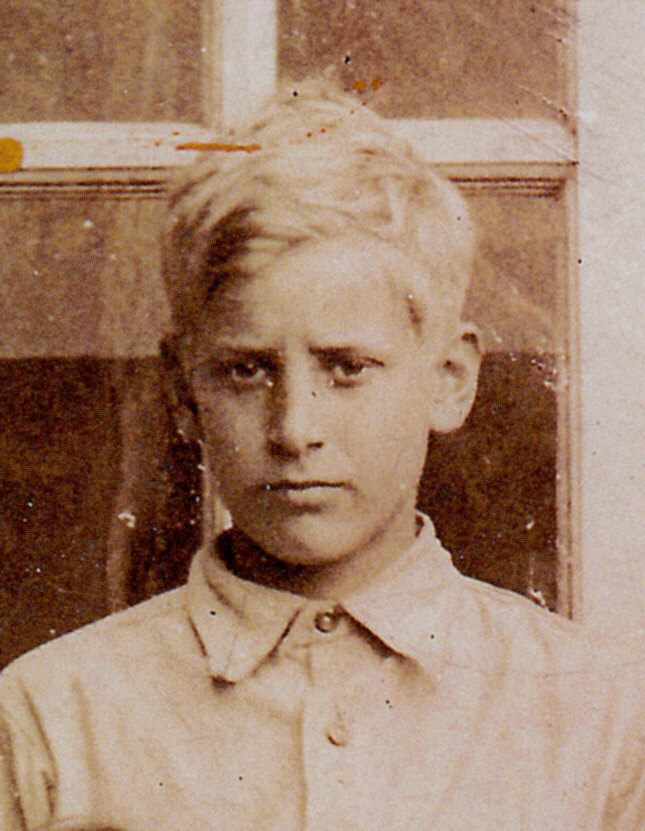Home > Family History > Hake > Robert H. Hake
 |
Robert H. Hake |
|
|
More Photos Stolen Bicycle Article 7th Ward News Bob's Obituary Gravesite Photos |
||
|
Robert Henry Hake, known as “Bob” and by some as “Pop,” was born on Sunday, September 16, 1921, in the Mahoningtown ward of southern New Castle, Lawrence County, Pennsylvania. He was the fifth child born to George Hartman Hake and Margaret Matilda (Doutt) Hake, both of whom were descended from German immigrants. George and Margaret had met in the New Castle area, were married in December 1914, and lived at several rural locations in Moravia and Willow Grove between 1915 and 1919. In late 1919 the Hake family began renting a house at #24 North Cedar Street in Mahoningtown, where Bob was born in 1921. The decade of the 1920’s was generally a time of great economic prosperity and Bob’s father George, holding a steady job with the Pennsylvania Railroad Company (PRR), was able to take advantage of that. In 1925, the Hake family, with their five children, purchased a farm back near Willow Grove in North Beaver Township. The farm, about fifty acres in size, was in an area just northwest of Willow Grove and along the northern bank of Hickory Creek. Today this area is known as Lawrence Junction. Robert’s father operated a small working farm but mainly concentrated on raising poultry. Bob grew up in the Willow Grove area, attended the Madison Avenue Christian Church in Mahoningtown, and attended the North Beaver Township Consolidated School in nearby Mount Jackson. He started the first grade in the fall of 1928 and among his classmates were Richard Reed, Virginia Kildoo, and Donald Fox. The Hake family continued to grow as Bob’s mother Margaret gave birth to six more children between 1927 and 1939. The Stock Market Crash of October 1929 and the subsequent Great Depression would have had a profound effect on the Hake family. Bob’s father George would only work sparingly on the railroad during the next decade and things were undoubtedly very tough during this time. Faced with mounting debts George was forced to sell off the farm in 1937-1938 and relocate to a house at #502 Montgomery Avenue Extension on the extreme southern edge of Mahoningtown. This house sat on the southwest corner of the intersection of Routes 18 and 108, exactly where the bridge on Route 108/Mount Jackson Road currently spans the Mahoning River (and area known as “the Y”). Bob continued his schooling in Mount Jackson and may have attended schools in West Pittsburg and Mahoningtown as well. He obtained his driver’s license in New Castle on Tuesday, October 25, 1938, when he was age seventeen. It must have been a tough examination because only thirty-six of sixty-four applicants successfully acquired their driver’s license that day. When Bob was about eighteen, and still in school, he ventured down to Baltimore, Maryland, to live with some friends of the family. Those friends were the Heater family, who resided on Betz Avenue in the Sparrows Point area near Dundalk. I found an article in the New Castle News mentioning Bob was going to visit family and friends in Baltimore in January 1940, so perhaps he just stayed down there. Homer and Nellie Heater, who had three children named Homer, Raymond, and Nellie, had previously lived in Willow Grove and South New Castle Boro before moving down to Baltimore in the late 1920’s. They had been neighbors and good friends with the Hake family (Homer Sr. may have worked with George Hake on the railroad as well) and apparently remained so. Bob graduated from Sparrows Point High School - year unknown - but I am guessing in May 1940 or possibly a year later. He also started working as a crane operator, most likely at Bethlehem Steel. Sparrows Point was home to a shipyard and industrial complex owned by Bethlehem Steel, which grew to became the world’s largest steel plant in the 1950’s. In the early 1940’s, as war raged in Europe, the United States was immersed in isolationism and concerned about economic recovery at home. That isolationist stance was shattered on December 7, 1941, when Japanese naval forces attacked the American military outpost in and around Pearl Harbor, Hawaii. Bob, while residing in Baltimore, was among those inducted into the U.S. Marine Corps in late August or early September 1942. At some point after his induction (exact time unknown) Bob was stationed at or spent time at the Philadelphia Naval Shipyard in Philadelphia, Pennsylvania. One night he and some buddies went to the Shavoo Roller Skating Rink in nearby Upper Darby. It was here that Robert met a young lady by the name of Dorothy Marie Greisiger. Her parents, Charles Greisiger - a carpenter by trade - and Marie (Schreiner) Greisiger, had immigrated to Pennsylvania from Germany, were married in about 1917, had three children between 1919 and 1928, and settled just outside Philadelphia in Clifton Heights in 1925. Dorothy, three years younger than Bob, would have turned eighteen in September 1942. Bob underwent specialized trained as a “Paramarine” and became a member of one of the elite Marine Parachute Battalions. He may have seen action in the South Pacific before the various specialized units of the Marine Corps were disbanded in early 1944. At that time Bob would have joined other veterans and a host of newer recruits to form the 5th Marine Division, known as the “Spearhead Division,” at Camp Pendleton, California. Bob transferred to Hawaii with the 5th in mid-1944 in preparation for action in the Western Pacific. That action would be incredibly fierce as the division was landed on the small island of Iwo Jima on February 19, 1945. After an epic battle, and suffering 25,000 casualties including over 6,800 dead, the division subdued the small island and withdrew back to Hawaii by late March. Bob apparently survived the action relatively unscathed. The battle-hardened division was still recuperating when Japan officially surrendered in August 1945. The division saw occupation duty in Kyushu, Japan, from September-November and then returned to California where most of its members were discharged from service in January 1946. Bob was honorably discharged as a corporal. Bob’s younger brother Paul Hake saw service in the Marine Corps at the end of the war and also performed occupation duty in Japan. Bob returned to the East Coast where he married his girlfriend Dorothy in Baltimore on Friday, January 25, 1946. They moved to Clifton Heights soon after to live with her parents for the time being. In the early 1950’s they bought their own house a few miles away in Ridley Park. The house, located at #650 Clymer Lane in the Leedom Estates development, is where they would make their longtime home. The house was located off Interstate 95 and near the Philadelphia International Airport. Bob took up the occupation of an electrical engineering technician, and for a time was employed at the Baldwin Locomotive Works in nearby Eddystone. In 1967 he found employment at the Philadelphia Naval Shipyard as a heavy equipment inspector and remained there for the next two decades. Over the years Bob and Dorothy had three sons born almost ten years apart: Robert “Bobby” Charles born in October 1946, Gary George born in May 1955, and Bryan John in April 1965. Son Gary was born a few weeks after Bob’s father George was tragically killed in a railroad accident back in New Castle. Bob’s mother Margaret lived alone for many years and eventually moved to Houston, Texas, to live with her son (and Bob’s brother) John Hake. She died in Houston in September 1969. Bob retired from the Philadelphia Naval Shipyard in 1988 when he was about sixty-six years old. His sons, grown up by that time, had all settled close by in the Philadelphia area as well. Bob settled into retirement but lost his wife Dorothy a few years later on Saturday, May 30, 1993. She died to complications from cardiomyopathy, which literally means “heart muscle disease.” She was sixty-eight years old. The funeral arrangements were handled by the White-Luttrell Funeral Home in Ridley Park and she was buried in Colestown Cemetery in Cherry Hill, New Jersey. His daughter-in-law Jori Hake (son Gary’s wife) had this to say about the later years of Bob and Dorothy: “Pop worked constantly. Dorothy was devoted to keeping a beautiful home and she worked as a cafeteria aid for Leedom Elementary for many years. After Dorothy passed Pop reconnected with his Marine buddies. He even went to Hawaii for a reunion. Other than that he spent a lot of time with our youngest while Jessica (our oldest) recovered from many surgeries because of her VonWillibrandts (vWD). He was the best father-in-law and PopPop EVER! My daughters want you to know that he liked to take them to McDonald's (he called it Macs) and he gave them their puppy, Harry, a Bishon Frise who lived 18.5 years.” In early 1998 Bob found out that he had cancer, though its exact origin and form was still in doubt. He was scheduled to begin treatments in the near future. On Wednesday, February 4, 1998, while he was at the doctor’s office (at the Crozer-Chester Medical Center in Upland) with his sons Bobby and Gary and their wives, he suffered a massive heart attack and died. He was seventy-six years old. A service was held at the White-Luttrell Funeral Home and he was buried next to his wife in Colestown Cemetery in Cherry Hill. The house at #650 Clymer Lane stayed in the family as Bob’s son Bryan moved in with his family. PopPop is sorely missed by his family.
|










